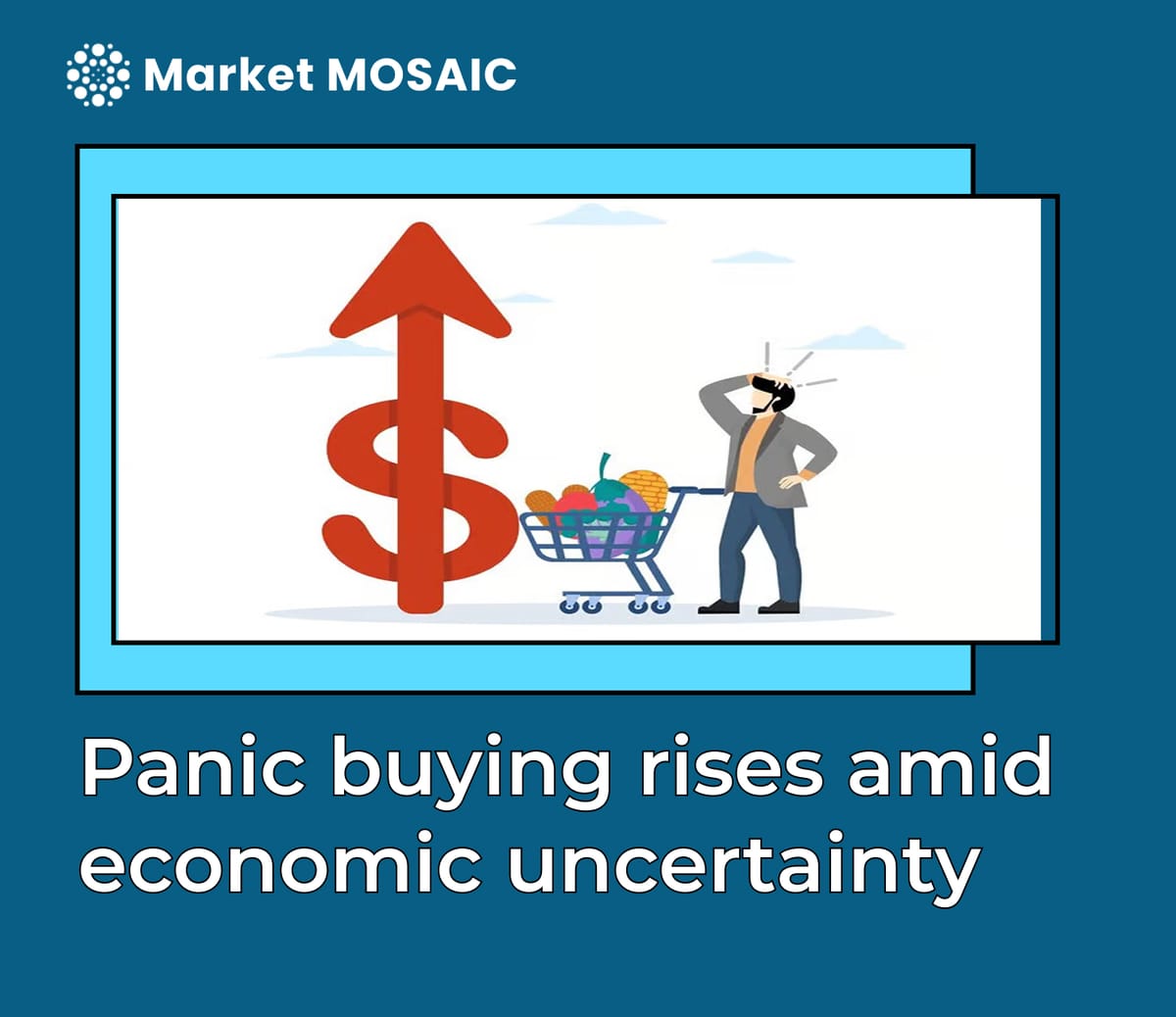Panic buying rises amid economic uncertainty

Last month, U.S. retail sales rose by 1.4 percent, with a 4.2 percent increase year-over-year. At first glance, these numbers might signal strong consumer confidence. But a closer look reveals a more urgent and complex story, one driven by anxiety rather than optimism. Consumers are not spending freely because they feel secure in the economy. They are spending now because they fear what lies ahead.
Our recent consumer panel data shows a distinct shift in behavior. Instead of reacting to product shortages, as they did during the early stages of the COVID-19 pandemic, today’s shoppers are reacting to economic uncertainty. The primary trigger is inflation, compounded by the looming threat of new tariffs. People are accelerating purchases not because they want more, but because they expect to pay more later.
We observed a significant rise in foot traffic at warehouse retailers like Costco, where shoppers are stockpiling essential items. Electronics stores, especially Apple locations, have seen longer lines and high-demand surges as consumers rush to buy big-ticket items. Even auto dealers report customers moving up vehicle purchases in anticipation of rising prices.
This spike in sales can easily be misinterpreted as a sign of economic resilience. However, what we are really seeing is panic buying disguised as consumer strength. According to the Chicago Federal Reserve, such preemptive spending behavior can serve as a warning sign. When consumers front-load their purchases, they often reduce spending in the following months, which could create a sharp dip in future demand.
For business leaders, the lesson is clear: it is critical to look beyond headline sales figures and understand what is motivating consumer behavior.
The first step is to decode the true nature of the demand. This is not organic growth it is a defensive reaction to expected economic conditions. Companies that treat it as sustainable may end up overproducing or overstocking, only to face softening demand down the line. Adjusting forecasting models to reflect this reality is essential for avoiding costly miscalculations.
Resilience should also be top of mind. Now is the time to examine the strength and flexibility of your supply chain. Tariff-driven cost pressures can escalate quickly, making it vital to evaluate alternative sourcing strategies and cost management plans. A business built on agility will be far better equipped to navigate volatility.
Communication with consumers must also be handled with clarity and transparency. Customers are already anxious about inflation and pricing. When companies explain the reasons behind price changes, honestly and proactively they foster trust that can sustain long-term loyalty, even in tough conditions.
Finally, executives must broaden the scope of their market monitoring. Retail sales alone no longer tell the full story. A more complete view should include inflation trends, consumer confidence indices, and geopolitical developments. This comprehensive approach will lead to better-informed strategic decisions.
In conclusion, what appears to be a boom may actually be a buffer against looming economic challenges. Business leaders who understand this dynamic and plan accordingly will be positioned not just to survive the uncertainty, but to lead through it with confidence and foresight.





